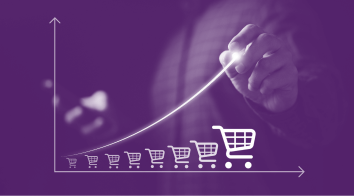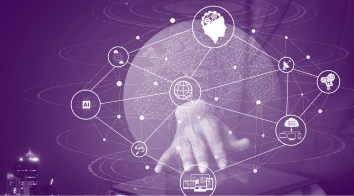Retail
Industry
Retail Industry
The retail industry has seen immense changes and challenges in the last three years. Will talk about:
- How the pandemic changed customer expectations and shifted business processes
- The rise of the e-commerce era, where everyone is online shopping and expects same-day shipping, self-serve capabilities, real-time tracking, and personalized service
- How it’s difficult to compete with other retailers without profound digital transformations

Evolution of the Retail Industry: A Decade of Transformation
2010-2015
2016-2019
2020
2010-2015

Rise of E-Commerce
- Growing popularity of e-commerce.
- Introduction of mobile shopping apps.
- Shift in consumer behavior towards online transactions.
2016-2019

Omnichannel Retailing
- Emergence of omnichannel strategies.
- Integration of online and offline shopping experiences.
- Increased focus on customer journey and seamless transitions.
2020

Integration of Digital Technologies
- Disruption caused by the global pandemic.
- Accelerated shift towards e-commerce due to lockdowns.
- Contactless payments and safety measures become priorities.
Customer Expectation
2010-2024
2010-2024
2010-2023
Personalization
- Increased demand for personalized shopping experiences.
- Data-driven recommendations and targeted marketing.
2010-2023
Convenience and Speed
- Rise of same-day delivery services.
- Emphasis on quick and convenient shopping experiences.
- Instant gratification expectations.
Supply Chain
2015-2024
2018-2024
2015-2023
Supply Chain Digitization
- Adoption of digital technologies in supply chain management.
- Improved efficiency, transparency, and real-time tracking.
- Efforts to build resilient supply chains.
2018-2023
Sustainability Practices
- Increasing focus on sustainable and eco-friendly practices.
- Consumer awareness and demand for environmentally
conscious products.
Impact
2020-2021
2020-2024
2020-2024
2010-2015

E-Commerce Boom
- Unprecedented speed in vaccine development.
- Global collaboration for research and distribution.
- Highlighted the industry’s crucial role in public health.
2016-2019

Contactless Shopping
- Accelerated adoption of digital solutions.
- Remote clinical trials and virtual drug launches.
- Increased use of AI in drug discovery and development.
2020

Resilient Supply Chain
- Fractured supply chain directly impacts on ability to fulfill.
- Compounded by new trade barriers (eg Brexit)

Conclusion
Future Outlook
(2024 onwards)
- Consumer-centric approaches for a dynamic market.
- Technology drives further agility in offer and fulfilment.
- Exploration of augmented reality, AI, and other innovations to enhance experience.
- Acceleration of subscription and service based purchases.
Key Challenges
01
Dynamic Pricing Challenge
Challenge: Adapting to the fast-paced world of dynamic pricing, where real-time adjustments are necessary, requires retailers to overhaul legacy pricing systems and processes. The shift from occasional price changes to frequent adjustments poses a challenge in terms of technology, strategy, and resource allocation.
02
Assortment Optimization Complexity
Challenge: The transition from inward-out assortment planning to outward-in strategies presents a significant challenge. Retailers now need to harness AI/ML capabilities to decipher dynamic consumer buying trends and market analytics, demanding a paradigm shift in assortment optimization strategies and tools.
03
Digital Shelf Navigation
Challenge: Navigating the new world of the digital shelf poses challenges for brands accustomed to dominating physical shelf space. With only a fraction of the digital shelf space available and constant real-time cataloging by sort algorithms, brands must adapt to sophisticated monitoring strategies to maintain visibility and competitiveness.
04
Direct-To-Consumer Integration
05
Personalization and Customization Implementation:
Challenge: The rising demand for personalization and customization poses implementation challenges for retailers. Adapting to the expectation that brands understand unique customer needs requires a re-evaluation of marketing approaches, data utilization, and the integration of systems that can deliver personalized experiences efficiently.
How InspireXT addresses these challenges with Retail Services/Solutions
Request for services
Find out more about how we can help your organization navigate its next. Let us know your areas of interest so that we can serve you better.


